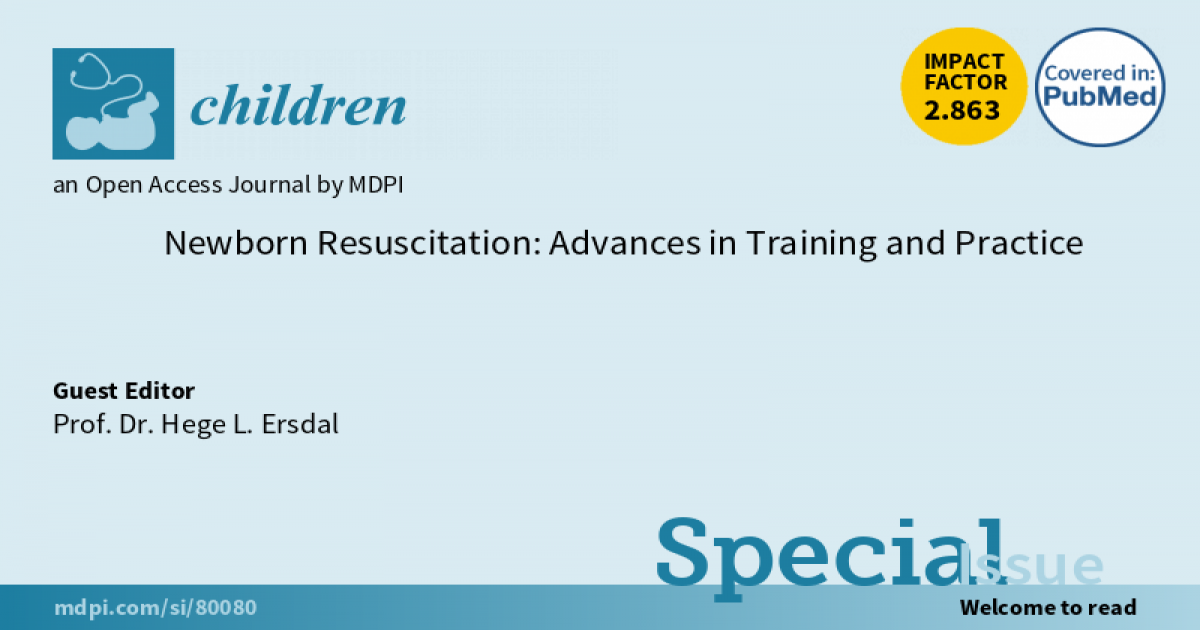Newborn Resuscitation: Advances in Training and Practice
A special issue of Children (ISSN 2227-9067). This special issue belongs to the section "Pediatric Neonatology".
Deadline for manuscript submissions: closed (30 November 2021) | Viewed by 13923

Special Issue Editor
2. Department of Anaesthesiology and Intensive Care, Stavanger University Hospital, 4011 Stavanger, Norway
Interests: newborn resuscitation; simulation-based education and translation to clinical practice; global health challenges on the day-of-birth
Special Issues, Collections and Topics in MDPI journals
Special Issue Information
Dear Colleagues,
The day-of-birth carries the highest risk of death during a whole lifetime. Each year, an estimated 1 million newborns die on their first and only day of life. Another 1 million survive with lifelong neurodevelopmental impairment. The majority of these babies could have been saved with appropriate basic newborn resuscitation. About 10% of newborns need urgent and qualified help at birth, but the lifesaving procedure of newborn resuscitation is difficult to master and reported to be inadequately performed around the world. Furthermore, the most effective ventilation modes and techniques remain to be established.
Evidence suggests that implementation of newborn resuscitation training programs improves provider competences and newborn outcomes. However, the optimal time-interval between trainings, and how to effectively learn the practical skill of ventilation, are still unclear. Multi-modal approaches including simulation-based training with emphasis on feedback/debriefing are thought to be most beneficial for learning, and we need more knowledge about efficient strategies to increase implementation of such training in busy healthcare services, transferability to clinical practice and the impact on newborn survival in different settings.
This Special Issue will explore advances in newborn resuscitation training and clinical practice on a global scale.
Prof. Dr. Hege L. Ersdal
Guest Editor
Manuscript Submission Information
Manuscripts should be submitted online at www.mdpi.com by registering and logging in to this website. Once you are registered, click here to go to the submission form. Manuscripts can be submitted until the deadline. All submissions that pass pre-check are peer-reviewed. Accepted papers will be published continuously in the journal (as soon as accepted) and will be listed together on the special issue website. Research articles, review articles as well as short communications are invited. For planned papers, a title and short abstract (about 100 words) can be sent to the Editorial Office for announcement on this website.
Submitted manuscripts should not have been published previously, nor be under consideration for publication elsewhere (except conference proceedings papers). All manuscripts are thoroughly refereed through a single-blind peer-review process. A guide for authors and other relevant information for submission of manuscripts is available on the Instructions for Authors page. Children is an international peer-reviewed open access monthly journal published by MDPI.
Please visit the Instructions for Authors page before submitting a manuscript. The Article Processing Charge (APC) for publication in this open access journal is 2400 CHF (Swiss Francs). Submitted papers should be well formatted and use good English. Authors may use MDPI's English editing service prior to publication or during author revisions.
Keywords
- newborn resuscitation
- ventilation techniques
- novel training strategies
- simulation-based training
- deliberate practice
- implementation of training
- training frequency and retention of skills
- translation to clinical practice
Benefits of Publishing in a Special Issue
- Ease of navigation: Grouping papers by topic helps scholars navigate broad scope journals more efficiently.
- Greater discoverability: Special Issues support the reach and impact of scientific research. Articles in Special Issues are more discoverable and cited more frequently.
- Expansion of research network: Special Issues facilitate connections among authors, fostering scientific collaborations.
- External promotion: Articles in Special Issues are often promoted through the journal's social media, increasing their visibility.
- e-Book format: Special Issues with more than 10 articles can be published as dedicated e-books, ensuring wide and rapid dissemination.
Further information on MDPI's Special Issue polices can be found here.






